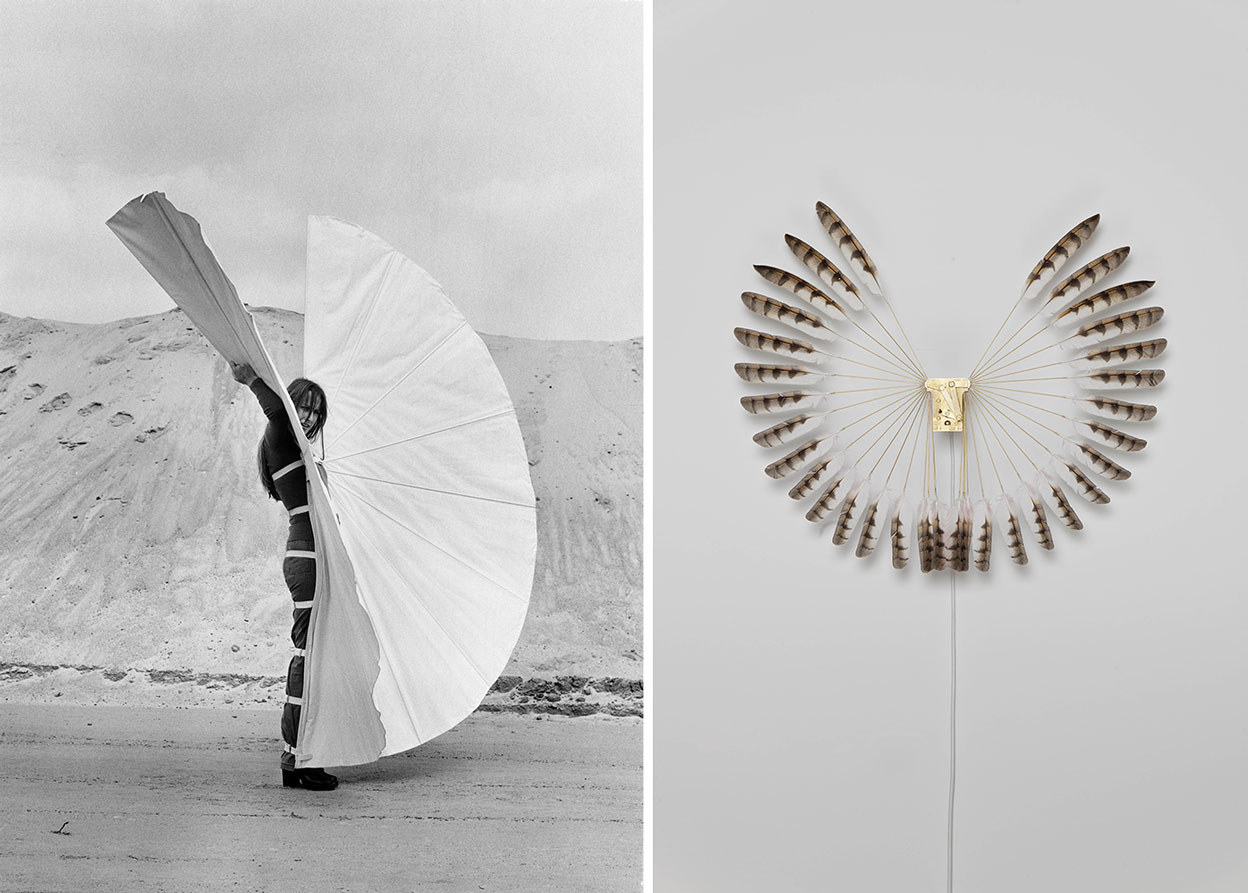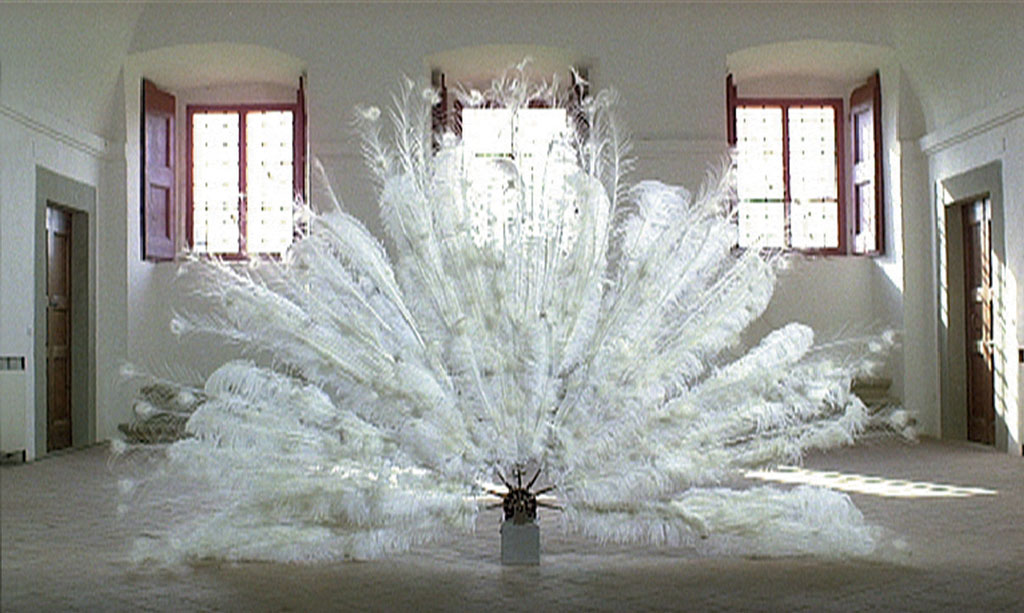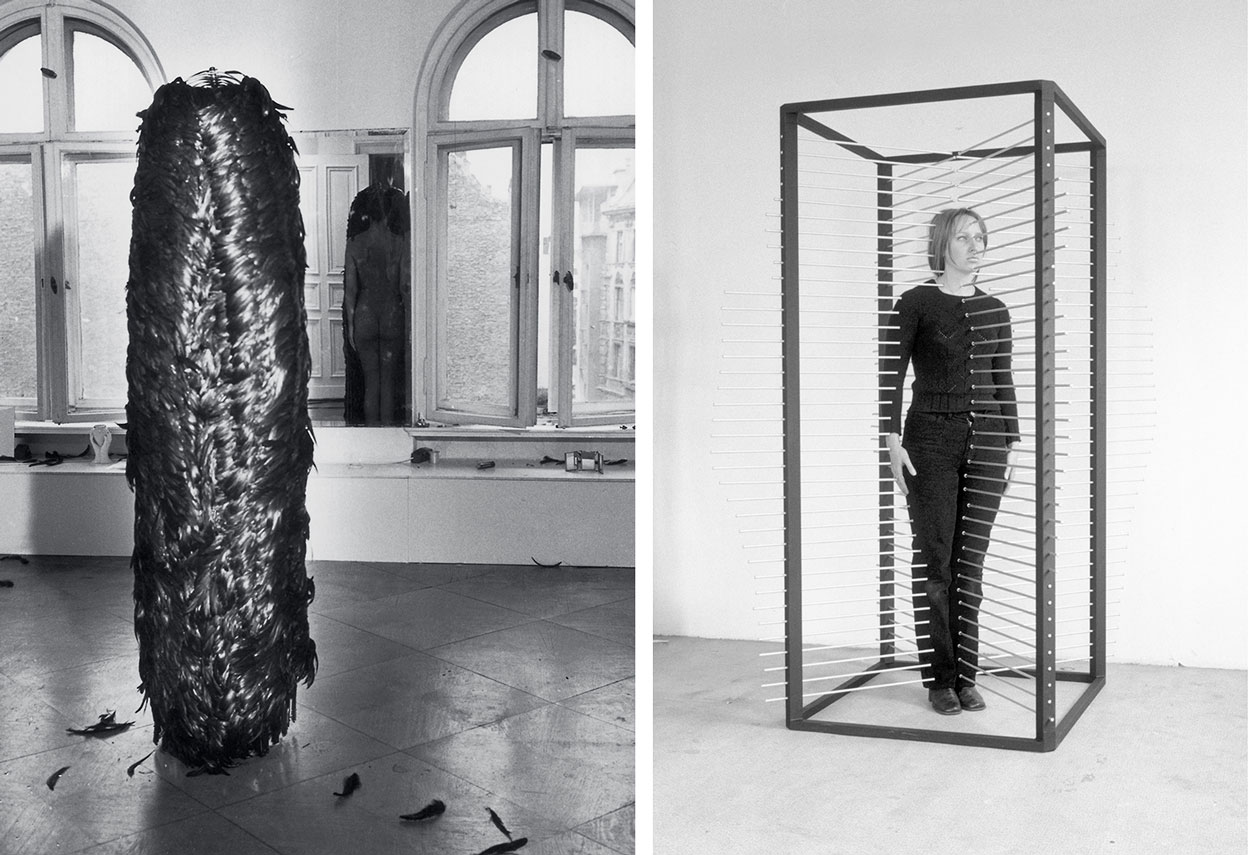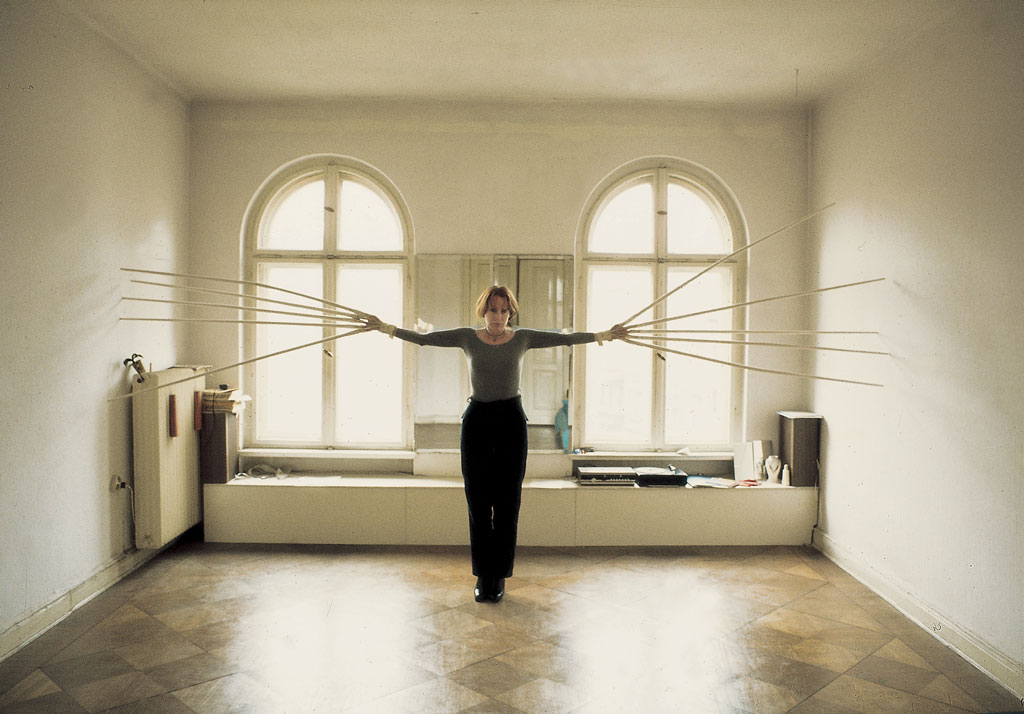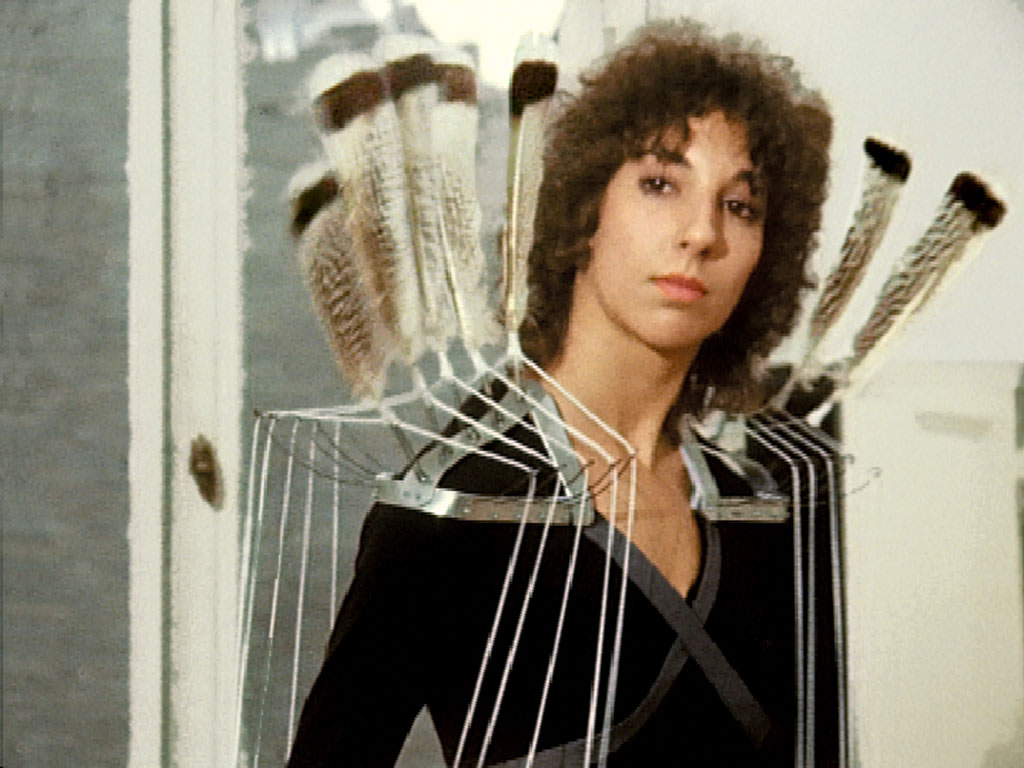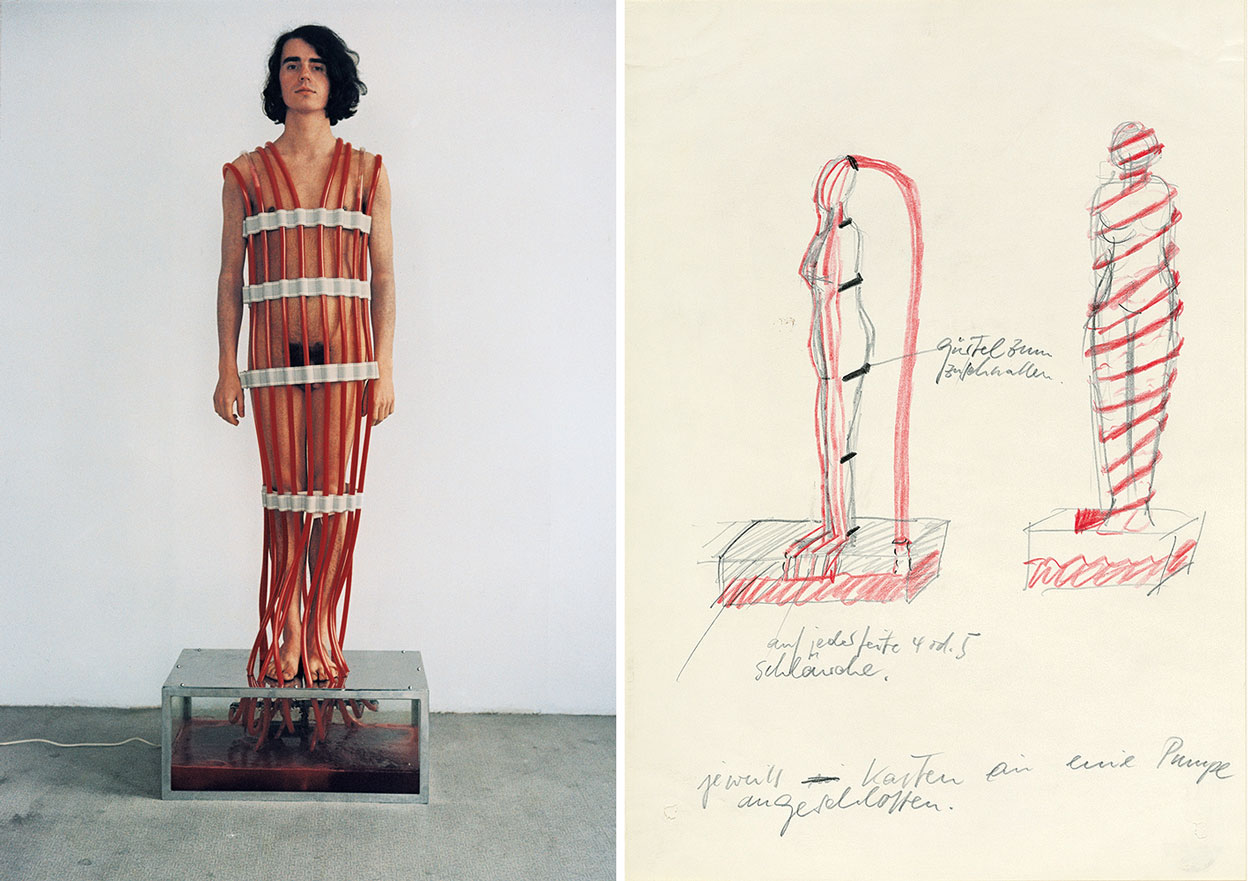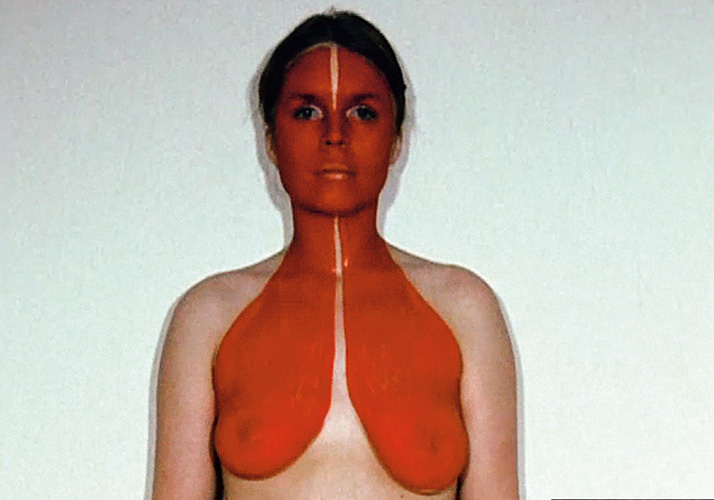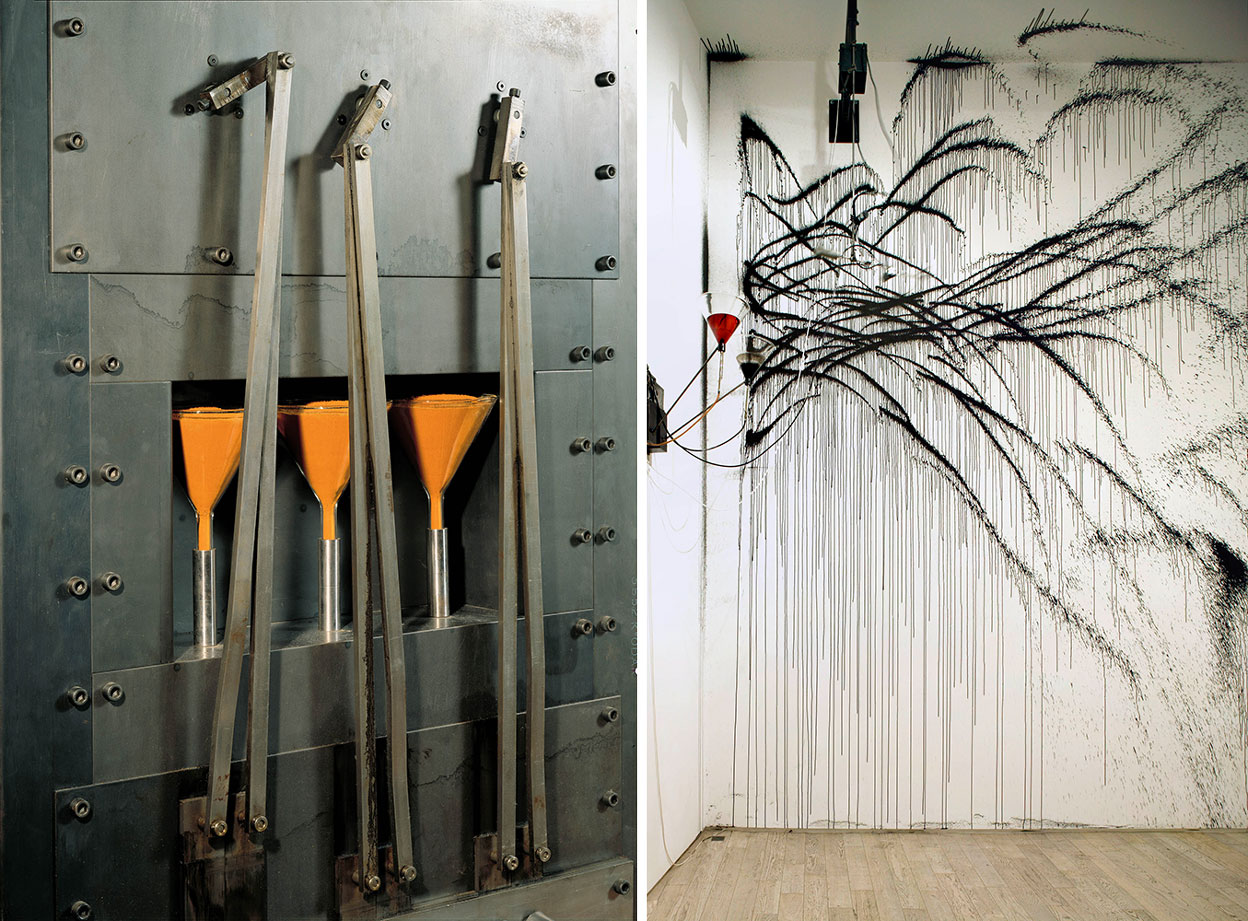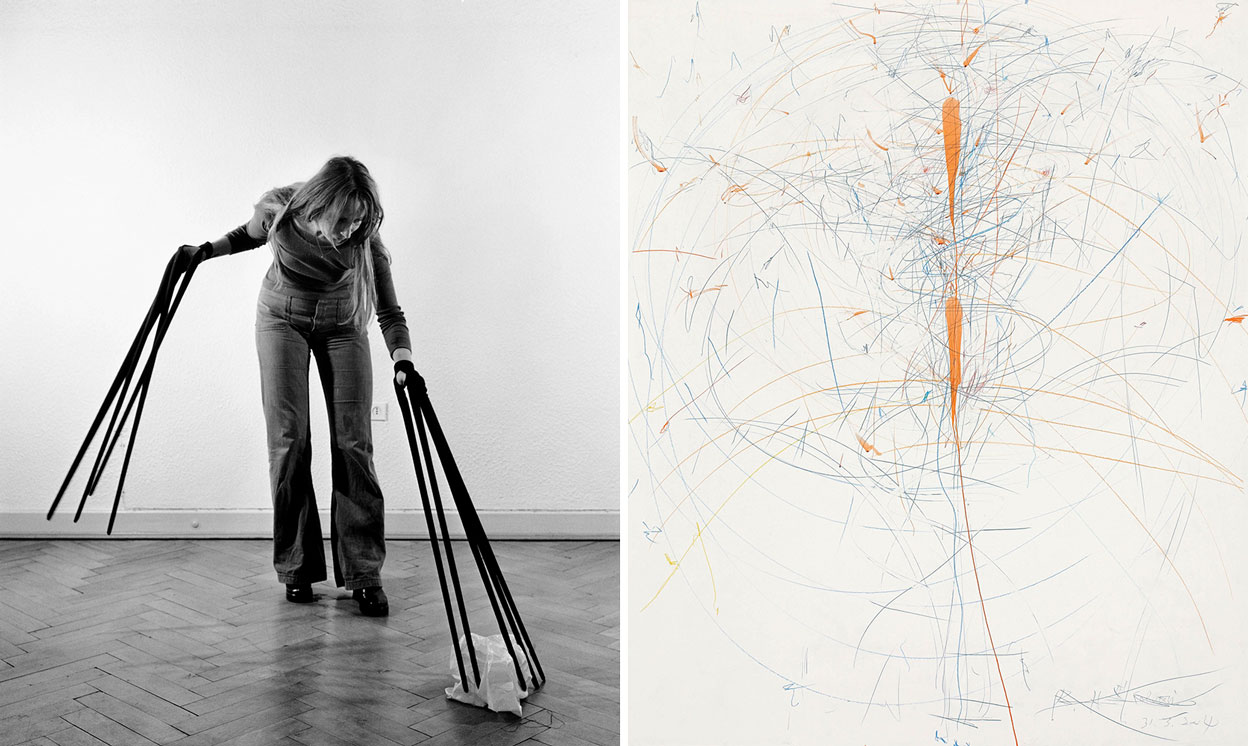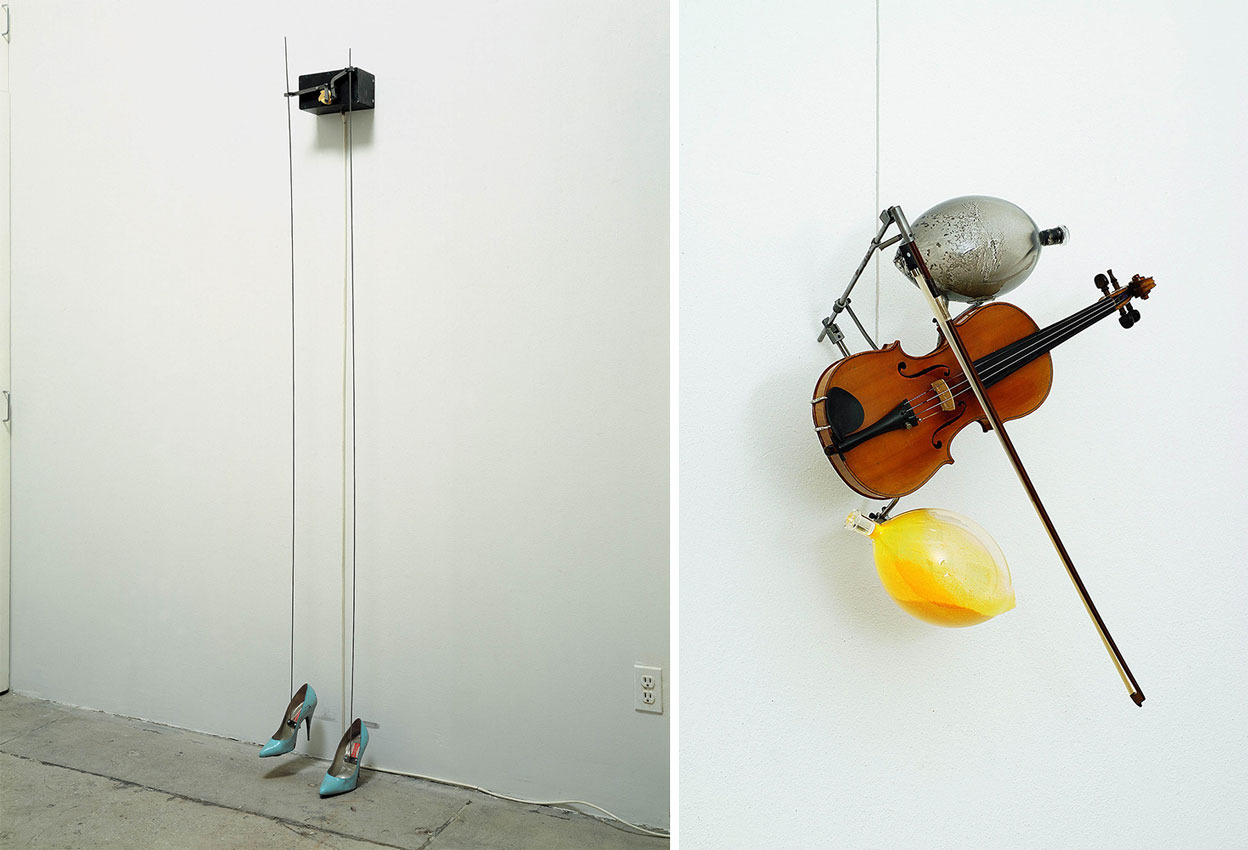ART CITIES:Basel-Rebecca Horn
 In her oeuvre Rebecca Horn has developed a distinctive symbolic universe whose openness and poetry continues to touch us. In her works, the artist choreographs movements of humans and machines: the mechanical motor function of the body and a fantastic dance of objects give expression to emotions, the movements of the mind.
In her oeuvre Rebecca Horn has developed a distinctive symbolic universe whose openness and poetry continues to touch us. In her works, the artist choreographs movements of humans and machines: the mechanical motor function of the body and a fantastic dance of objects give expression to emotions, the movements of the mind.
By Efi Michalarou
Photo: Museum Tinguely Archive
The major solo exhibition of Rebecca Horn’s work “Body Fantasies” at Museum Tinguely combines early performative works and later kinetic sculptures to highlight lines of development within her oeuvre, the focus is on transformation processes of body and machine. The exhibition that includes body instruments and actions, films, kinetic sculptures and installations – is the first of its kind in Switzerland for more than 30 years. Horn’s work is always inspired by the human body and its movement. In her early performative pieces of the 1960s and ‘70s, this is expressed via the use of objects that serve as both extensions and constrictions of the body. Since the 1980s, her work has consisted primarily of kinetic machines and, increasingly, large-scale installations that come alive thanks to movement, the performing body being replaced by a mechanical actor. Divided into 4 themes the exhibition traces the development of her works as “stations in a process of transformation”, emphasizing this continuity in her work. In the first section of the exhibition “Flapping Wings”, a first group of works is derived from the performance “White Body Fan” (1972) in which Horn referred to the old human fascination with winged and feathered beings. Using belts, she fixed a pair of semi-circular wings made of white fabric to her body that unfolded when she raised her arms. While the strut-reinforced sails recall early flying machines, the framing of the body and the movements involved are most reminiscent of a butterfly. A film documents the experiments she performed with this body instrument: opening and closing, controlling the wings in the wind, forms of concealing and revealing, but also the spreading of wings. These movement patterns were further developed in a series of sculptures, as in the “Paradise Widow” (1975) that encloses a naked body, the parading “Mechanical Peacock Fan” (1981), the “Hängender Fächer” (1982) and the feather wheel “Zen der Eule” (2010). The second section of the exhibition “Circulating” addresses various forms of circulation: organic, mechanical and electrical. The central work here is “Overflowing Blood Machine” (1970) that presents the human individual as a hydromechanical structure, recalling historical uses of the machine as a model for scientific insights into the human body. This work is juxtaposed with the installation “El Rio de la Luna” (1992) whose system of pipes sprawls out into the space, as mercury is moved in its ‘heart chambers’ by pumps. Whereas in the former, the inner movement of circulating blood is relocated to the exterior – and the person ‘wearing’ the work is forced to remain motionless, reduced to a mechanized object , in the latter Horn’s emphasis was on rendering visible emotional energy flows. Drawn lines and colored markings as traces of body movements constitute the thematic focus “Inscribing” within the exhibition. This motif is presented by the “Pencil Mask” (1972), a fearful, mask-like instrument that turns the body into a blind, rhythmic drawing machine. Horn pursued the topic further with automated painting machines, of which two types are on display: “Salomé” (1988) and “Les Amants” (1991). The markings they create are always understood not only as traces of physical movement but also as expressions of emotions and passion. Finally, drawing as an inscription of body and mind is returned to in the large-format, hand-made works on paper of the “Bodylandscapes” series (2004/2005) whose dimensions refer to the size and reach of the artist’s own body. “Touching” is the final themed group of works that looks at extensions of hands and feet. An early work in this category is “Finger Gloves” (1972). With the finger extensions made of balsawood covered with black fabric, the artist explored her surroundings as if probing with tentacles. In her kinetic works, she developed this subject further, often using everyday objects that can be understood as body extensions in a Freudian sense, including brushes, hammers or women’s high-heeled shoes like in “American Waltz” (1990). With their keyboards, typewriters, too, are instruments that extend our fingers. Horn used them in several works, including “La Lune Rebelle” (1991) that consists of a group of typewriters that tap away as they hang from the ceiling. The works in this group also offer a sociological view of the machine as an extension of the body, in particular by bringing together objects that are considered female.
Info: Curator: Sandra Beate Reimann, Museum Tinguely, Paul Sacher-Anlage 1, Basel, Duration: 5/6-22/9/19, Days & Hours: Tue-Sun 11:00-18:00, www.tinguely.ch

